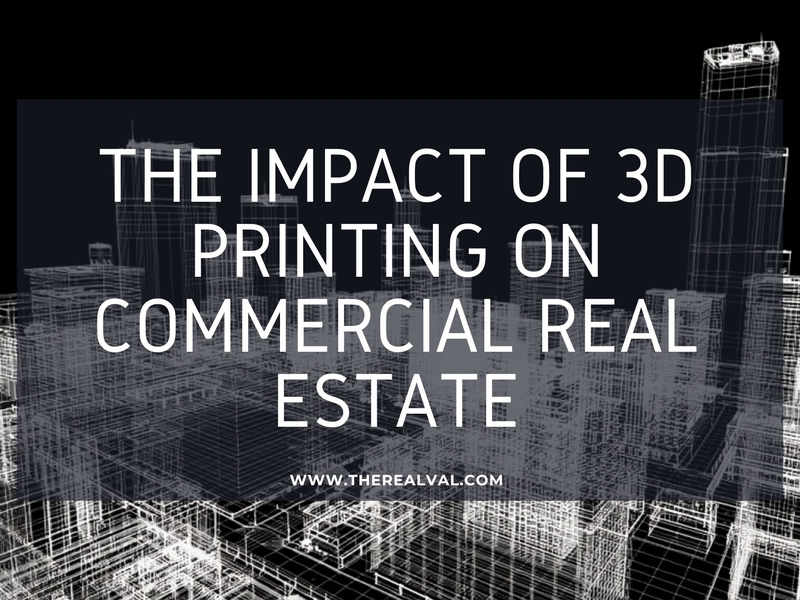3D printing technology is set to revolutionize the U.S. commercial real estate (CRE) sector, offering cutting-edge solutions to persistent challenges like high construction costs, lengthy timelines, and limited design flexibility. This article delves into the current uses, advantages, obstacles, and future outlook of 3D printing in the CRE industry.
Current Applications of 3D Printing in Commercial Real Estate
- Walmart's Expansion Project: A prime example of 3D printing in CRE is Walmart’s recent expansion of its Supercenter in Athens, Tennessee. The project, using Alquist 3D’s concrete printing technology, added 8,000 square feet to the facility. Interestingly, this space functions as a logistics hub for online orders, rather than a traditional retail area. Walmart’s foray into 3D printing showcases its commitment to innovation and cost-effective construction, with plans to replicate this model across over 200 projects.
- Affordable Housing Solutions: 3D printing also holds significant potential in addressing the U.S. affordable housing crisis. Traditional construction often incurs high costs due to expensive materials and labor. In contrast, 3D printing can cut costs by up to 30% while speeding up build times. For instance, companies like ICON have printed homes within hours at a fraction of the cost of conventional methods, using local materials—ideal for regions with limited access to standard building resources.
- Innovative Design Possibilities: 3D printing enables the creation of intricate designs that are often difficult or impossible with traditional construction techniques. This flexibility allows for unique architectural features that enhance the aesthetic appeal of commercial properties. As the technology advances, it may even be used to construct larger structures, such as skyscrapers.
Benefits of 3D Printing in Commercial Real Estate
- Cost Efficiency: One of the most significant benefits of 3D printing is its potential for cost savings. The technology reduces material waste by up to 30% and lowers labor costs through faster build times. Estimates indicate that a single-family home printed with this technology could cost 5% less than one built through traditional methods, with the potential for even greater savings as the technology matures.
- Faster Construction: 3D printing accelerates construction, dramatically shortening project timelines. Homes, for example, can be printed in under 24 hours, allowing developers to meet market demands quickly—an advantage for commercial projects that rely on timely completions.
- Sustainability: The use of locally sourced materials and the reduction of waste contribute to more sustainable building practices. With increasing pressure on cities to reduce carbon footprints, 3D printing presents an eco-friendly alternative that aligns with these environmental goals.
- Advancements in pre-fabrication: 3D printing is also advancing the field of prefabrication. By producing building components off-site, developers can ensure higher quality control, reduce on-site labor needs, and minimize disruptions to the surrounding environment. This method is especially advantageous for large-scale commercial projects, such as office buildings and retail centers.
Challenges Facing 3D Printing in Commercial Real Estate
- Regulatory Barriers: One of the main obstacles to the widespread adoption of 3D printing is navigating complex building codes and regulations. New materials and construction methods require extensive testing and approval before they can be used, which can delay projects and increase costs.
- Technical Limitations: Although progress is being made, current 3D printing technology may not yet meet all structural requirements for larger commercial buildings. Challenges related to material strength and load-bearing capabilities need further research and development before the technology can be widely adopted.
- Market Acceptance: The real estate sector is traditionally cautious, and new technologies like 3D printing often face resistance. Developers may be reluctant to invest in untested technologies without clear evidence of their long-term benefits.
Future Prospects
Despite these challenges, the future of 3D printing in commercial real estate looks bright. As investment in research and development grows, we can expect improved materials that meet regulatory standards and offer enhanced structural integrity.
Successful projects like Walmart's expansion will likely boost confidence in 3D printing among developers and investors. Additionally, the potential for creating affordable housing solutions could further drive demand for this technology as cities continue to face housing shortages.
In conclusion, while challenges remain, 3D printing is poised to make a significant impact on U.S. commercial real estate. With its ability to reduce costs, speed up construction, and offer innovative design options, 3D printing could transform the way commercial properties are built in the years to come.
Trending





